HOSTS- Jeremy Burns, Matthew Scott Phillips
TYPE- Ear Training
DURATION- 41:31
BUMPER MUSIC- "The Forgotten Chord" (Area 47 Music)
ANNOUNCER- Mike Cunliffe
We've already given a good listen to the interval. Let's add one more note to it and hear what the triad sounds like. We will discuss the sonic characteristics of the four basic triads: major, minor, augmented and diminished and their inversions. We will also stack on one more note and talk about the standard basic 7th chords: major major seventh (M7), major minor seventh (Mm7 or the dominant 7th), minor seventh (m7) and even the elusive
minor major seventh chord (mM7).
INTERVAL- The distance between two notes, harmonically or melodically. An interval consists of two components: 1) NUMBER and 2) QUALITY.
TRIAD- A group of three notes: the root note, the note a 3rd above it and the note a 5th above it. This can also be viewed as a combination of two intervals, each that of a 3rd.
MAJOR TRIAD- ROOT + MAJOR 3rd + PERFECT 5th
MINOR TRIAD- ROOT + MINOR 3rd + PERFECT 5th
DIMINISHED TRIAD- ROOT + MINOR 3rd +
DIMINISHED 5th
AUGMENTED TRIAD- ROOT + MAJOR 3rd + AUGMENTED 5th
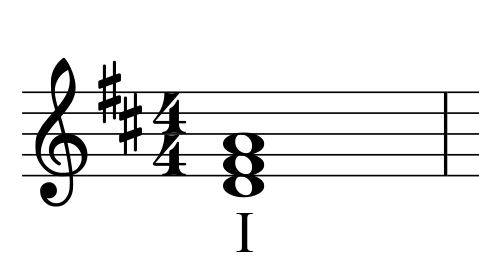
Root position is considered to be the most stable of all note arrangements for the basic triad.
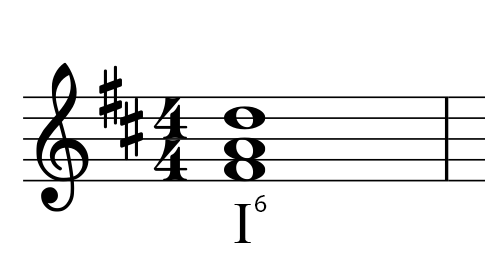
In 1st inversion, listen for the 4th in the highest register. This interval is a little more pronounced in 1st inversion.
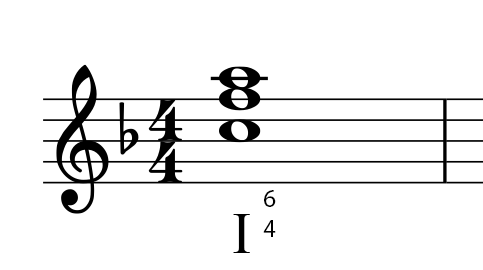
In 2nd inversion, listen for the THIRD in the highest register. You can often identify the third by singing down, 3 scale steps, to the TONIC or the ROOT.
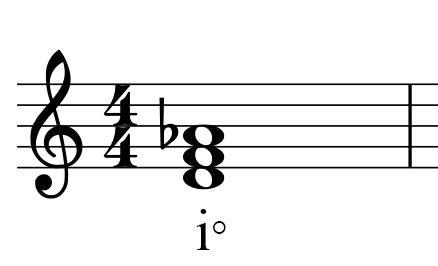
Where we listened for the PERFECT 4th interval in MAJOR and MINOR 1st INVERSION TRIADS, we will have to listen for the DIMINISHED 5th in DIMINISHED TRIADS.
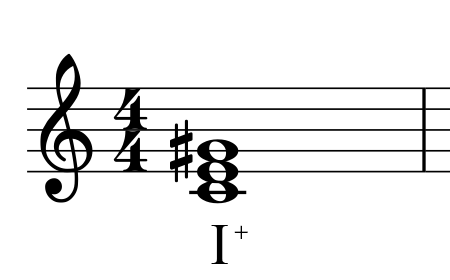
Where we listened for the PERFECT 4th interval in MAJOR and MINOR 1st INVERSION TRIADS, we will have to listen for the MAJOR 3rd in
AUGMENTED TRIADS in 1st INVERSION.
THE SAME LISTENING TECHNIQUES CAN APPLY TO MAJOR AND MINOR TRIADS
You must always listen for the BASS note as a frame of reference. You may hear an overwhelming THIRD in the high register,. However, if a THIRD is in the bass voice, this triad is actually in 1st INVERSION.
SEVENTH CHORDS
Since the full SEVENTH CHORD contains 4 notes, we will no longer call them TRIADS.
MAJOR MAJOR SEVENTH CHORD (M7 or MAJOR 7th)
ROOT + M3 + P5 + M7
(dreamy, sweet, meandering, uncertain)

MAJOR MINOR SEVENTH CHORD
(Mm7 or DOMINANT 7th)
ROOT + M3 + P5 + m7
(has a strong need to resolve to the tonic triad)
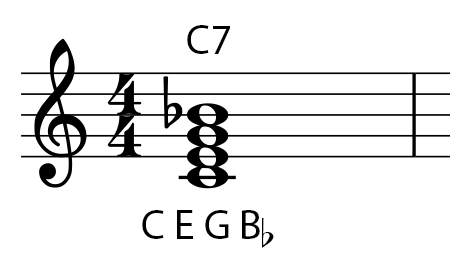
MINOR MAJOR SEVENTH CHORD (mM7)
ROOT + m3 + P5 + M7
(disorienting, floaty, listen for the augmented 5th)
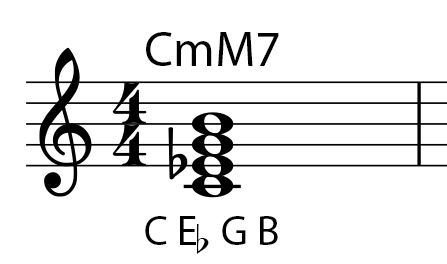
MINOR SEVENTH CHORD (m7 or MINOR 7th)
ROOT + m3 + P5 + m7
(train whistle chord, listen for the m3 and m7, unstable but doesn't demand the same
resolution as the Mm7)
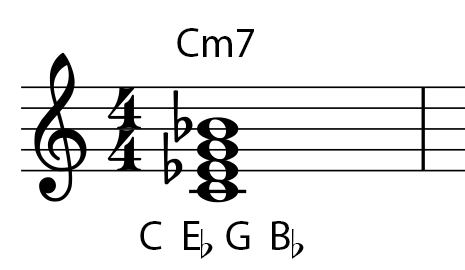
-Try not to think of a triad as one sound. Rather, try to hear each of the 3 notes that make it up. Get used to singing them in your head, high to low or low to high (whichever you're most comfortable with).
-In ROOT POSITION, the basic triad is in its most stable position. You will not detect a PERFECT 4th.
-In 1st INVERSION, listen for a PERFECT 4th in the upper register. That interval is the strongest in this position.
-In 2nd INVERSION, listen for the MAJOR or MINOR THIRD, as the case may be, in the highest register. You can usually detect the 3rd by singing down to the root from that note. There will be a PERFECT 4th in this position but it will be a weaker sonority than that of the THIRD.
-Diminished chords have a feeling of tension while augmented chords have more of a "floaty" or disorienting feel.
-Where we listened for the PERFECT 4th interval in MAJOR and MINOR 1st INVERSION TRIADS, we will have to listen for the DIMINISHED 5th in DIMINISHED TRIADS and for the MAJOR 3rd in AUGMENTED TRIADS in 1st INVERSION.
